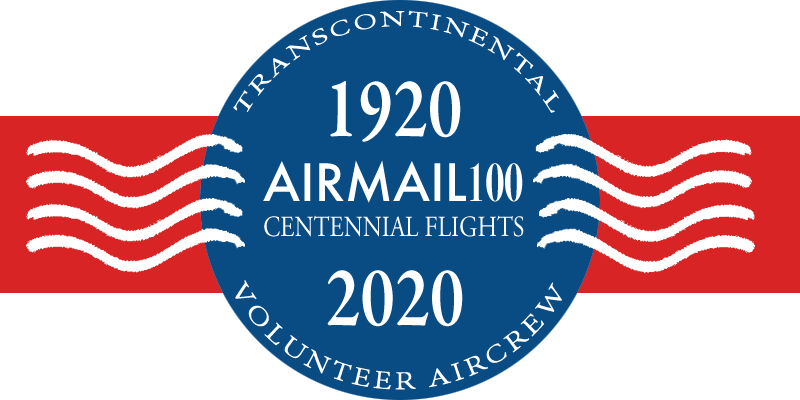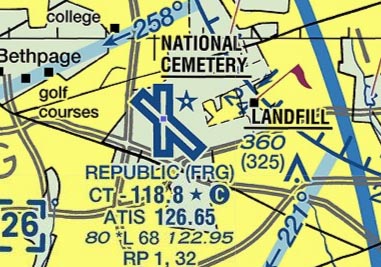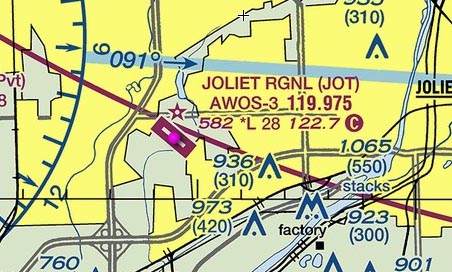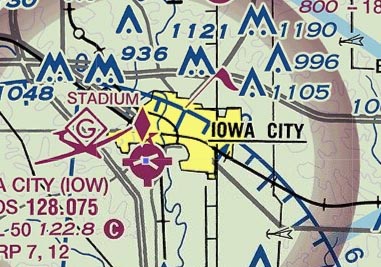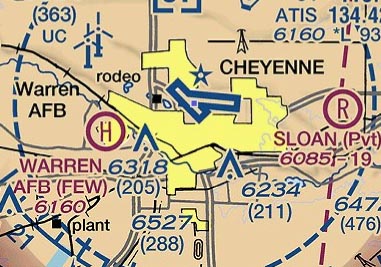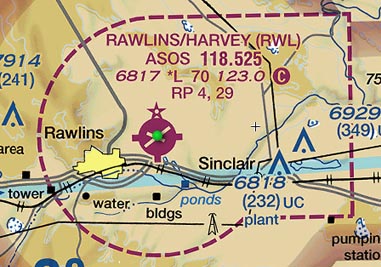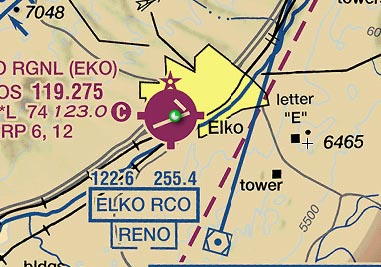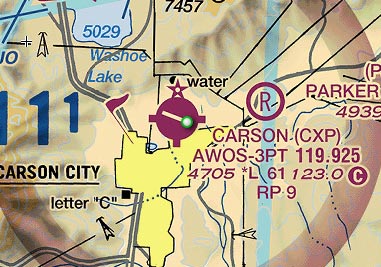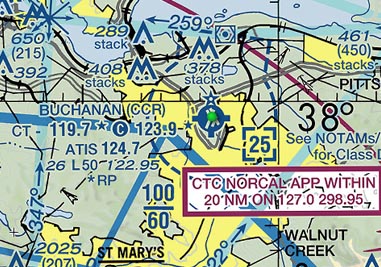Our Transcontinental Waypoints
FARMINGDALE, NY
The original Hazelhurst air field near Mineola, NY suffered the fate of the post-World War Two boom and was sold to developers in the early 1950s: being plowed under for a shopping center. Today the closest active airport is some ten miles further east: Republic Airport (FRG). We propose to launch the commemorate fiight from this location. Click image to enlarge the sectional. Click the film negative icon for historic view of field.
Youtube button links simulated 3D flight over each segment using landmarks given in Pilots' Directions New York-San Francisco guide published in 1921 by the US Post Office.
BELLEFONTE, PA
Just on the western edge of the Allegheny Mountains, Bellefonte was the first waypoint at which pilots could refuel their planes. This was also one of the most dangerous segments of the some 280 mile flight over largely mountaineous terrain in planes ill-equipped to deal with icing and blinding snow storms. The original landing field is gone, designated only by a historical marker, but Bellefonte still supports a 3600 ft field some 3 miles southwest of town. Click the Google Earth icon for satellite image
MIDDLEFIELD, OH
Glenn L Martin was a pioneer aviator and competitor to the Wright Brothers. He parlayed his knowledge and business acumen into manufacturing both commerical and military aircraft. During the First World War, his plant in Cleveland, OH turned out bombers for the Army. Nestled in the Southwest corner of the sprawling facility was the U.S. Air Mail field, now also long since vanished. In keeping with the spirit of the original airmail operations, we now will be moving the landing field 25 miles to the east to Geauga County (7G8) effective 5 June 2020.
BRYAN, OH
Maybe the main reason the tiny farm community of Bryan, OH was chosen as the mid-point between Cleveland and Chicago is because it sat astride a major rail line that early air mail pilots could follow since they had no maps, just a slim guide book entitled "US Air Mail Service Pilots's Directions New York to San Francisco Route" published five months after the 1920 flight. Like most of the other original airfields, the one at Bryan is also gone, designated only by a state historical marker. However, the town does maintain an active airport, Williams County (0G6) on its eastern edge.
JOLIET, IL
Even in 1920, the city of Chicago was sprawling with a population of more than 2 million inhabitants. The suburb of Maywood would become the site of Checkboard Field, a pivate landing field built in 1919 by Chicago clothing merchants Decker & Cohen and located on the southeast corner of Roosevelt Road and First Avenue. It was this airfield that the Post Office would use for the 1920 flight. Eventually, the field would be relocated three-quarters of a mile to what is now the grounds of the Edward Hines, Jr. Veterans hospital. Due to the heavy air traffic around O'Hare International and Midway, we will be utilizing Joliet Airport.
IOWA CITY, IA
West of Chicago some 190 miles is Iowa City, the first of the handful of original Air Mail airfield that is still fully operational, though neighoring Cedar Rapids (CID) now handles the brunt of most commercial air service. It was at Iowa City where east-bound air mail pilots would stop to refuel and have the spark plugs in the big V-12 Liberty engines changed. It was here Jack Knight, low on fuel and dog-tired landed to rest, eat a few donuts and drink cups of coffee before he "Saves the Airmail" on his historic night flight in 1921.
OMAHA, NE
A local civic and philanthropic organization known as The Knights of Ak-sar-ben (Nebraska spelled in reverse) bought a large plot of ground in 1919 along the Big Papio Creek west of town for the purpose of building a thoroughbred race track. The southeastern edge of the plot at the corner of what would become Center Street and 63rd was set aside for the U.S. Aerial Mail service. Eventually deemed too small for safe flight operations by 1924, air mail operations were moved to Fort Crook (now Offutt AFB) and then to American Leagion Municipal Airport (now Eppley Airfield) once it was completed in 1925. Today the site is part of Aksarben Village, a mixed-use residential, commercial, retail development. It too is remembered only by a historical marker, so we will be utilizing Millard (MLE) airport. To experience what the airfield might have looked like in 1920, Bill Moore, the event organizer, has created an Android smartphone-based Virtual Reality exploration App. Click the Googe Cardboard icon to the right to download.
NORTH PLATTE, NE
Like Iowa City, North Platte, NE (LBF) has the distinction of being in the minority of surviving airmail fields. Flying out of Omaha, a pilot could point his compass 270 degrees due west, fly for about two hours or 245 miles and arrive in North Platte along the sparkling thread of water of the same name. Still it could be a bit intimating flying out over the Great Plains because towns and landmarks were few and far between as aviation writer William Dubois discovered when he retraced the route in classic 1946 Ercoupe.
CHEYENNE, WY
Just over 200 miles west of North Platte the front range of Rockies stand like a wall over which the DH-4s faced their first real altitude challenge. Cheyenne, WY (CYS) sits at over 6,600 feet, twice as high as North Platte. Just to the west stands Medicine Bow Peak rising over 12,000 feet. Rated at a maximum operational altitude of 21,000 feet, the DH-4 Liberty engine could struggle to maintain 10,000 feet. Fortunately, pilots could fly around the north side of the peak where the terrain, most under 10,000 was navigable in the DH-4, though Jack Knight had crashed in this wilderness just weeks before the famous night flight to Chicago.
RAWLINS, WY
There appears to be very little information about the history of this field located on the Union Pacific line. It is approximately 135 miles north and west of Cheyenne if you give Medicine Bow Peak a wide berth off your left. It does appear on an offical 1924 Transcontinental Air Mail map. Whether it was used in the original 1920 flight remains a question.
NOTE: DUE TO RUNWAY CLOSURE AT RWL DURING AIRMAIL100 CENTENNIAL FLIGHTS, WE WILL NOW USE SARATOGA, WY (SAA) AIRPORT.
ROCK SPRINGS, WY
Assuming the pilots stopped at Rawlins, WY, it as only about a 100 miles on into Rock Springs for which we do have sufficient historical information on its role in original transcontinental flight. Following the Union Pacific railroad bed out of Rawlins, the 1920 airmail pilot descended towards an escarpment known, appropriately, as Pilot Butte, in the shadow of which sat Rock Springs. Five miles north of the railroad and oil boom town, the community had graded out a gravel airstrip at the base of the escarpment. Today, where the field once lay is now, incongruously, a verdant green golf course and the community of North Rock Springs. The nearest working airport is Southwest Wyoming Regional (RKS) some nine miles east of the town.
WOODS CROSS, UT
Of the 16 original airmail landing fields, Salt Lake City, some 155 miles west southwest of Rock Springs, grew into a major airline hub connecting the vast American intermountain West with the coasts. Originally founded in 1911 on sheep herding grounds called Basque Flats, by 1920 it be renamed Woodward Field after hangars were added and US Air Mail planes began to land. Given the density of heavy commercial air traffic into and out of SLC, Skypark (BTF) will be the transfer point.
ELKO, NV
Roughly a little over a hour's flying time west of the Great Salt Lake, hidden behind the East Humbolt Range and Ruby Dome mountains lies the railroad and mining community of Elko, NV. It became an Airmail service waypoint in 1920, providing a refueling point for east and west-bound air mail planes. The original field is now Elko Regional airport.
CARSON CITY, NV
Like Checkerboard Field in Chicago and the field outside Rock Springs, the original Airmail field in Reno, NV is now lost below a golf course. Airmail pilots were advised the field "lies two miles west of the city. The main runway lies east and west. The field is marked by a T and wind indicator. And landing from four ways is unobstructed. Reno is 4,497 feet above sea level. Whenever possible it is advisable to leave the Reno field on the east-west runway, taking off to the east. A slight downgrade enables the ship to quickly obtain flying speed. Just beyond the east edge of the field the ground is extremely rough and there is a huge ditch here." As of 2 June 2020, we are planning to use Carson City (CXP) as the transfer point to avoia potential scheduling conflicts with the Reno Air Races slated to begin that weekend
SACRAMENTO, CA
Once the DH-4 crossed the last of the Sierra Nevadas following the Union Pacific tracks into Sacramento, CA, the hard part of the flight was behind you. The landing field, originally called Mills Field was renamed Mather Field in honor Second Lt. Carl S. Mather. The Post Office guide describes is as "located to the east of Sacramento and near the small siding called Mills, 2 miles north and east of the course. A huge white water tower serves as an excellent landmark as well as the three lines of buildings on the ground."
HISTORICAL ADDENUM: A newspaper clipping reporting the landing on September 11th indicates the pilot flew non-stop from Reno to San Francisco.
CONCORD, CA.
The curious thing about the Marina airmail field in San Francisco is it is still there: a long, narrow grassy strip 1,700 feet long. If it were a modern paved runway its ends would be marked by compass headings of 8 and 26, shorthand for 80 and 260 degrees. It lies just two miles east of the Golden Gate Bridge on the shores of San Francisco Bay. A DH-4 mail plane could still land there today, but it would be dangerous, not to mention illegal, yet it was the original Pacific coast terminus of a nearly 2,700 mile route. Ironically, it was also the shortest leg, less than 100 miles. Since Marina Green is no longer available for aircraft operations, in consultation with various area EAA chapters, we will use Buchanan Airport at the city of Concord, CA.
